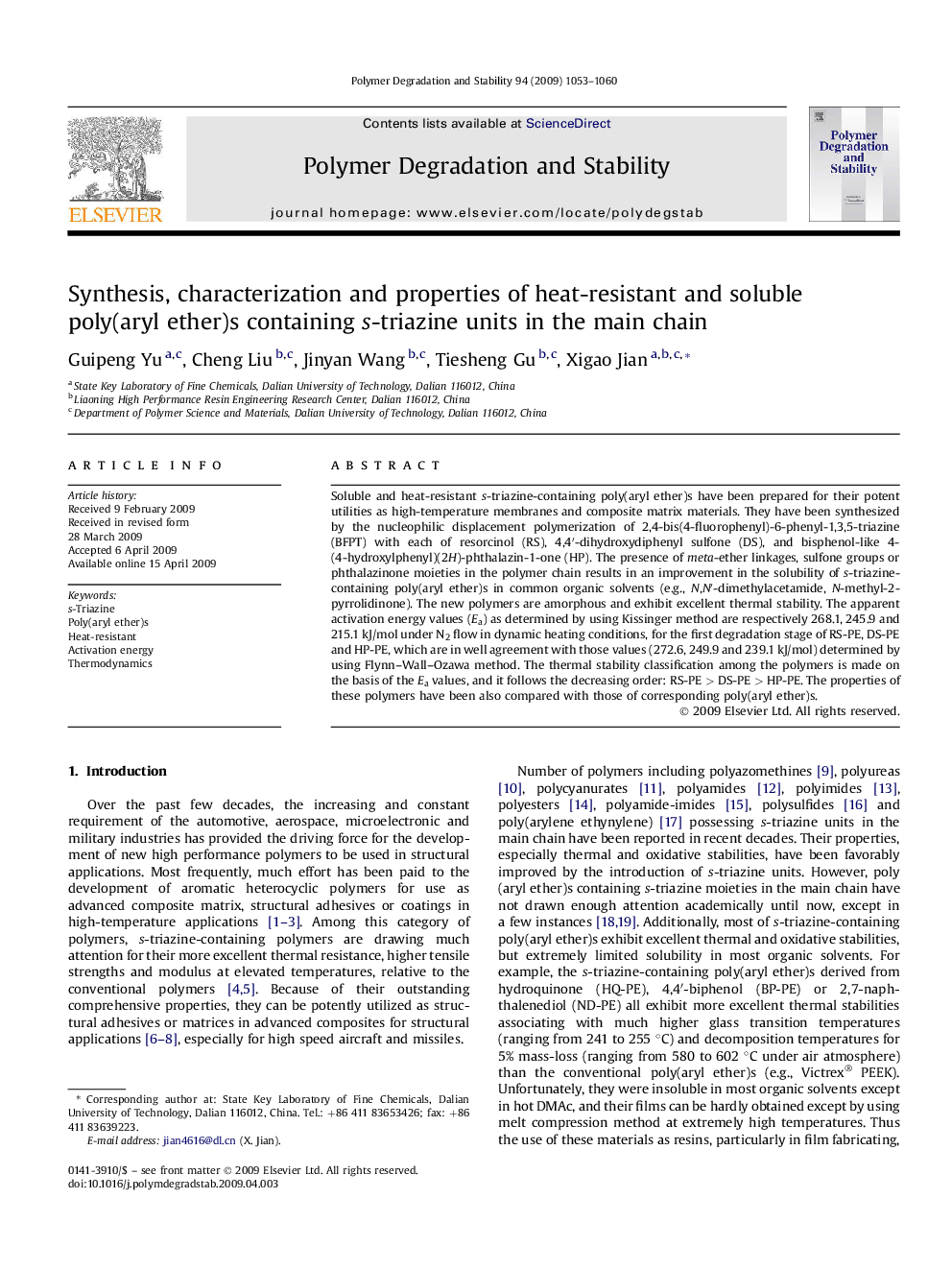| Article ID | Journal | Published Year | Pages | File Type |
|---|---|---|---|---|
| 5203140 | Polymer Degradation and Stability | 2009 | 8 Pages |
Abstract
Soluble and heat-resistant s-triazine-containing poly(aryl ether)s have been prepared for their potent utilities as high-temperature membranes and composite matrix materials. They have been synthesized by the nucleophilic displacement polymerization of 2,4-bis(4-fluorophenyl)-6-phenyl-1,3,5-triazine (BFPT) with each of resorcinol (RS), 4,4â²-dihydroxydiphenyl sulfone (DS), and bisphenol-like 4-(4-hydroxylphenyl)(2H)-phthalazin-1-one (HP). The presence of meta-ether linkages, sulfone groups or phthalazinone moieties in the polymer chain results in an improvement in the solubility of s-triazine-containing poly(aryl ether)s in common organic solvents (e.g., N,Nâ²-dimethylacetamide, N-methyl-2-pyrrolidinone). The new polymers are amorphous and exhibit excellent thermal stability. The apparent activation energy values (Ea) as determined by using Kissinger method are respectively 268.1, 245.9 and 215.1Â kJ/mol under N2 flow in dynamic heating conditions, for the first degradation stage of RS-PE, DS-PE and HP-PE, which are in well agreement with those values (272.6, 249.9 and 239.1Â kJ/mol) determined by using Flynn-Wall-Ozawa method. The thermal stability classification among the polymers is made on the basis of the Ea values, and it follows the decreasing order: RS-PEÂ >Â DS-PEÂ >Â HP-PE. The properties of these polymers have been also compared with those of corresponding poly(aryl ether)s.
Related Topics
Physical Sciences and Engineering
Chemistry
Organic Chemistry
Authors
Guipeng Yu, Cheng Liu, Jinyan Wang, Tiesheng Gu, Xigao Jian,
